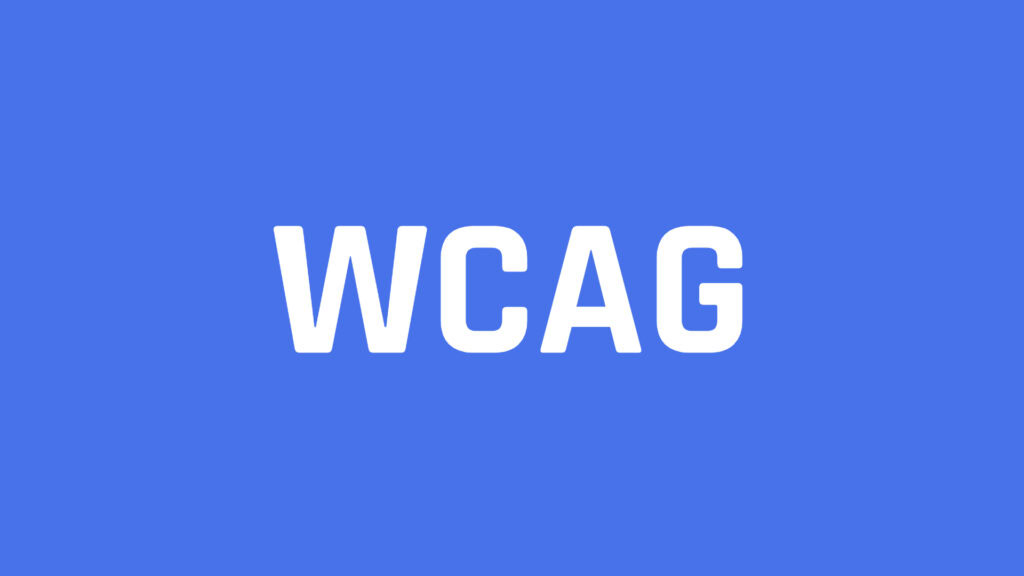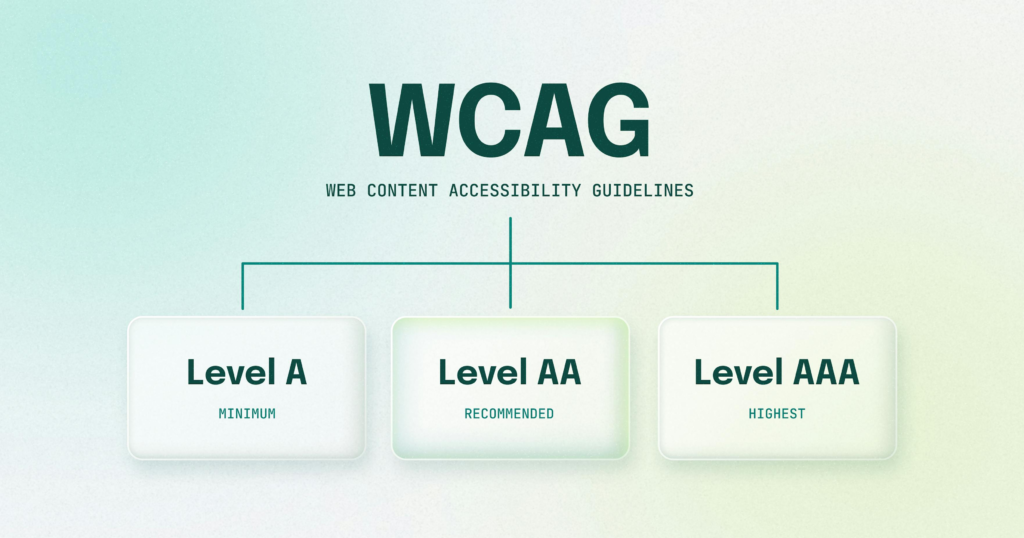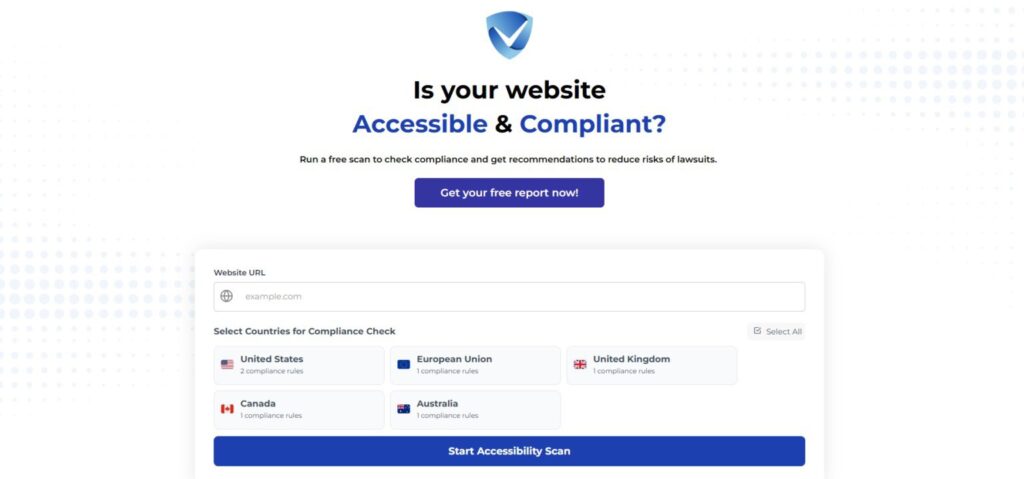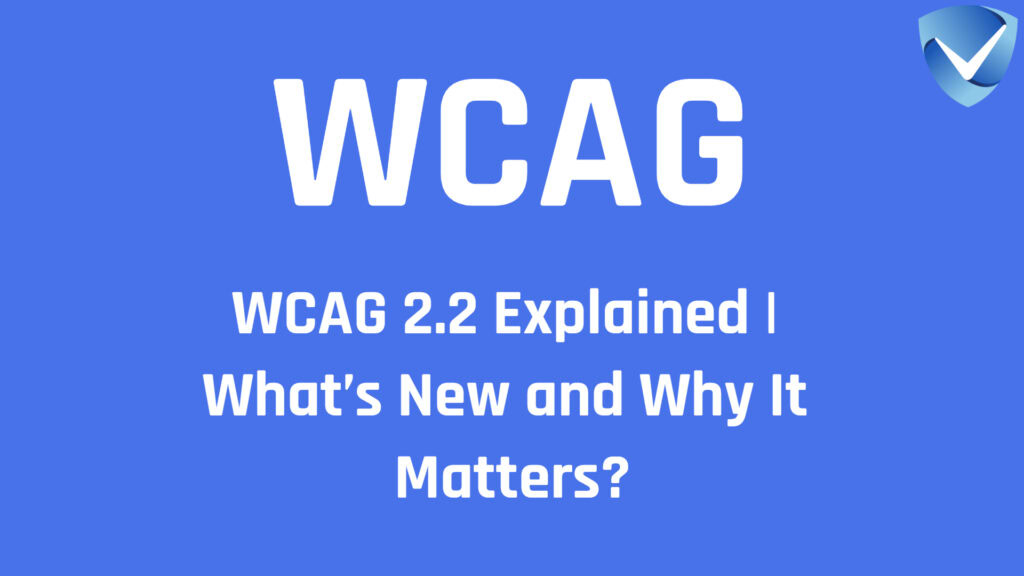Overview of WCAG Updates Timeline
The Web Content Accessibility Guidelines (WCAG) have steadily evolved since their inception, providing a framework for making web content more accessible to individuals with disabilities. The first version, WCAG 1.0, was published by the World Wide Web Consortium (W3C) in 1999. However, it was not until the release of WCAG 2.0 in December 2008 that a more robust set of criteria was introduced, offering guidelines that could be applied to a broader range of web technologies.
WCAG 2.0 established a universal framework consisting of twelve guidelines organized under four principles: Perceivable, Operable, Understandable, and Robust (POUR). These principles aimed to provide clarity and comprehensive coverage for accessibility aspects in web design. As technologies and user needs continued to evolve, WCAG 2.1 was introduced in June 2018, expanding upon the previous guidelines to address mobile accessibility and cognitive disabilities, alongside specific criteria for screen readers. This version aimed to bridge gaps that were identified by accessibility experts and users during the ten years following WCAG 2.0’s release.
The most recent update, WCAG 2.2, was published in early 2023 after notable delays due to the COVID-19 pandemic. This version incorporates feedback gathered from various stakeholders, including accessibility advocates and users, which helped to refine and improve the guidelines. The updates introduced new success criteria that focus on enhanced accessibility for users with cognitive disabilities, as well as improved navigation for individuals utilizing assistive technologies. As the web continues to expand and change, these updates underscore the ongoing commitment to ensuring that digital content remains accessible for everyone, regardless of their abilities.

What’s New in WCAG 2.2?
The Web Content Accessibility Guidelines (WCAG) 2.2 introduce several key enhancements aimed at improving the accessibility of web content, especially for mobile users. One of the most significant updates is the new criteria for touch target sizes. The guidelines now specify that interactive elements should have a minimum touch target size of 44 x 44 pixels, addressing the challenges users face when navigating on touch devices. This change is particularly beneficial for individuals with motor impairments, ensuring that buttons and links are easy to activate.
Another important improvement revolves around focus visibility. WCAG 2.2 emphasizes the need for enhanced focus indicators on interactive components, allowing users to easily identify which element is currently selected. This updated guidance plays a critical role in ensuring keyboard navigability, which is essential for users with visual disabilities. Clear focus visibility contributes to better navigation, reducing the risk of confusion and improving overall usability.
In addition to these technical enhancements, WCAG 2.2 also introduces cognitive accessibility features. The new guidelines aim to assist users with cognitive disabilities by promoting clearer error prevention techniques. For example, the updated criteria recommend providing explicit instructions and suggestions for correcting errors in input fields, simplifying the user experience. Furthermore, improved navigation patterns are advocated, encouraging a more logical flow of content that is easier for all users to follow, particularly those with cognitive challenges.
Lastly, WCAG 2.2 addresses authentication processes, specifying success criteria for accessible methods of user verification. This assists in minimizing barriers for individuals with disabilities during login procedures. Also, visual controls for hover and focus states have been refined, enhancing the accessibility of interactive elements. With these new features and enhancements, WCAG 2.2 represents a substantial step forward in making web content more inclusive for all users.
Preparing for WCAG Compliance in Future Updates (WCAG 3.0)
As organizations navigate the evolving landscape of web accessibility, preparing for WCAG 3.0 compliance is paramount. This forthcoming update is expected to introduce a more flexible and comprehensive framework designed to encompass a broader range of technologies and user needs. Unlike its predecessors, WCAG 3.0 aims to provide guidance that transcends traditional web design, addressing the advancements in digital media and interactive technologies.
One of the most significant anticipated changes is the implementation of a new scoring system that enables organizations to assess and prioritize accessibility efforts more effectively. This scoring mechanism will take into account a wider variety of accessibility features, allowing for a more nuanced understanding of compliance. To prepare for this shift, organizations should consider conducting an internal audit of their current digital assets to identify areas needing improvement. This proactive approach will not only aid in achieving compliance but also enhance the overall user experience for individuals with disabilities.
Additionally, organizations must stay abreast of emerging technologies and their implications for accessibility. As innovations such as virtual reality, augmented reality, and artificial intelligence become increasingly integral to digital strategies, understanding how these technologies interact with existing accessibility standards is crucial. Engaging with stakeholders, including users with disabilities, can provide invaluable insights into their needs and preferences, informing updates to websites and digital content.
It is also advisable for organizations to foster a culture of accessibility by training staff on the importance of inclusivity and the specific requirements outlined in WCAG 3.0. Regular workshops and resources can better equip teams to integrate accessibility considerations into their workflows. By anticipating the changes associated with WCAG 3.0 and adopting a proactive stance towards compliance, organizations can ensure their digital environments remain user-friendly and accessible to all, paving the way for a more inclusive internet experience.

Benefits of Implementing WCAG 2.2
Implementing the WCAG 2.2 standards offers a multitude of advantages, greatly enhancing the user experience for everyone, particularly for individuals with disabilities. The primary benefit stems from the commitment to creating a digital environment that is both accessible and inclusive. This not only addresses the specific needs of users with diverse abilities but also improves usability for all. Elements such as clearer navigation, better contrast, and comprehensive guidance cater to a wide audience, leading to higher user satisfaction and engagement.
Moreover, adhering to WCAG 2.2 guidelines facilitates expanded audience reach. By ensuring content is accessible, organizations can attract potential customers who might otherwise experience barriers when attempting to access their services. This inclusivity not only enhances brand reputation but also fosters loyalty among a broader base of users, which can translate into higher revenue and sustained business growth. Accessible design benefits everyone—a principle that should be embraced not merely as obligation but as an opportunity for enhancement.
Legal compliance is another substantial advantage of implementing WCAG 2.2. With increasing global mandates for digital accessibility, organizations that adopt these standards mitigate the risk of legal repercussions. Compliance with accessibility regulations is not only beneficial from a legal standpoint but also reflects a commitment to social responsibility. As more countries endorse disability rights and accessibility laws, integrating WCAG 2.2 compliance becomes a vital component of corporate strategy.
In conclusion, the benefits of adopting WCAG 2.2 surpass the basic necessity of compliance. Enhanced user experience, expanded reach, and risk mitigation against legal challenges collectively underscore the significance of championing accessibility. By embracing these standards, organizations can fulfill their ethical obligations while enjoying substantial operational advantages, fostering an inclusive digital landscape for all users.
How to Implement WCAG Standards Effectively
Implementing WCAG standards effectively requires a structured approach that encompasses various strategies. One critical step in this process is conducting manual audits. While automated tools can identify many accessibility issues, they often miss nuanced problems that only a human reviewer can detect. Manual audits involve carefully examining web content, layout, navigation, and other design elements to ensure compliance with WCAG guidelines. This hands-on assessment helps to identify barriers that users with disabilities may encounter, leading to more comprehensive improvements.
In addition to manual audits, organizations should harness accessibility testing tools. These tools facilitate consistent checking of digital assets against WCAG criteria. By integrating both automated and manual testing strategies, teams can ensure a more robust evaluation of accessibility compliance. Various tools, such as screen readers, color contrast analyzers, and keyboard navigation simulators, can aid in uncovering issues and validating that web content is operable and understandable for all users.
Moreover, it is essential to prioritize updates based on the new success criteria introduced in WCAG 2.2. This means staying informed about the latest requirements and integrating them into the design and development processes. By systematically addressing these updates, organizations can enhance their accessibility posture over time. It is also advisable to engage with expert resources—such as accessibility consultants and training programs—who can provide guidance tailored to specific organizational needs. Leveraging expert knowledge ensures adherence to compliance standards and fosters a culture of accessibility awareness within the team.
In summary, effective implementation of WCAG standards involves a blend of manual audits, the use of accessibility tools, prioritization based on updated criteria, and expert resources. By adopting these strategies, organizations can create an inclusive digital experience that benefits all users.
Final Thoughts and Next Steps
As we conclude our examination of WCAG 2.2, it is essential to recognize the significant updates that have been introduced. The new guidelines aim to enhance the overall user experience for individuals with disabilities, ensuring that web content is not only accessible but also usable across various platforms and devices. Key updates such as the introduction of new success criteria for specific user interface components address longstanding gaps in accessibility practices. These enhancements reflect the ongoing evolution of digital accessibility and the increasing importance of universal design.
Organizations must understand that embracing accessibility is not merely about compliance with WCAG guidelines. It is an ongoing commitment that requires continuous improvement and adaptation. The web is a dynamic environment, and as technologies advance, so too must our strategies for inclusive design. Therefore, it is critical for organizations to integrate accessibility into their corporate culture and workflows, ensuring that it is considered at every stage of web development and content creation.
To take the first step toward improving your website’s accessibility, we encourage organizations to utilize a free website accessibility scanner. These tools can provide insights into the current state of accessibility on your site and identify areas requiring attention. By conducting an accessibility audit, organizations can uncover barriers and take actionable steps to enhance their web presence, fostering a more inclusive digital environment.
In light of the updates brought by WCAG 2.2, it is paramount to prioritize accessibility as a vital aspect of your online strategy. Fostering an inclusive digital experience not only benefits users with disabilities but also broadens the reach of your content to a more diverse audience. Take proactive measures today to ensure that your web content is accessible for all.
Try Our Free Website Accessibility Scanner

In an increasingly digital world, the significance of accessibility cannot be overstated. The Web Content Accessibility Guidelines (WCAG) 2.2 represent a vital step forward in ensuring that all individuals, regardless of their abilities or disabilities, can engage with content online. This commitment to inclusivity is not merely a legal obligation but also a moral imperative that aligns with values of equity and respect for human dignity.
Creating accessible digital experiences fosters an environment where everyone can participate meaningfully in society. It allows individuals with disabilities to access vital information, services, and opportunities that many take for granted. As technology evolves, the responsibility of developers, designers, and organizations grows. By adhering to WCAG 2.2, entities not only comply with standards but also demonstrate proactive corporate responsibility and leadership in promoting social good.
The ethical implications of accessibility extend beyond compliance. They involve reflecting on how the digital divide disproportionately affects marginalized populations. In making digital spaces more navigable and usable, organizations can contribute to a more inclusive society, thus bridging gaps and empowering individuals. Additionally, this focus on accessibility often leads to improved user experiences for everyone, thereby enhancing overall satisfaction and engagement with digital platforms.
As we embrace the changes introduced in WCAG 2.2, it is crucial for companies and individuals alike to prioritize accessibility in their practices. This not only meets societal expectations but also fosters goodwill and loyalty from a diverse audience. By choosing to make accessibility a priority, we facilitate a more inclusive digital landscape, ensuring that the benefits of technology can be enjoyed by all.
Resources for Further Learning
To expand your knowledge of web accessibility and the latest developments in the Web Content Accessibility Guidelines (WCAG) 2.2, a variety of resources are available to cater to different learning preferences. These resources not only provide valuable insights into the guidelines but also serve to enhance implementation strategies for developers and organizations alike.
For foundational understanding, the official documentation provided by the World Wide Web Consortium (W3C) is indispensable. The WCAG 2.2 quick reference simplifies the extensive guidelines, presenting an easy-to-follow format. Additionally, the W3C’s WCAG site offers in-depth explanations of the guidelines, including supplementary techniques and examples.
As practical implementation often requires real-world context, several best practice guides have been published. The U.S. Government Accessibility Standards outlines vital practices for creating accessible web content. Also, the Smashing Magazine’s accessibility guide is a great resource that offers practical tips driven by current industry practices.
For those seeking structured learning, numerous online courses are available. Platforms like edX and Coursera provide comprehensive courses focused on accessibility practices, catering to both beginners and experienced professionals. These courses often combine theoretical knowledge with hands-on practices.
Furthermore, becoming involved with community organizations can be immensely beneficial. Organizations such as the International Association of Accessibility Professionals (IAAP) provide networking opportunities, certification programs, and resources dedicated to fostering a global conversation around web accessibility standards.
By leveraging these resources, individuals can deepen their understanding of accessibility and effectively contribute to the creation of a more inclusive digital environment.
FAQs About WCAG 2.2
The Web Content Accessibility Guidelines (WCAG) 2.2 aims to enhance web accessibility, providing a framework for creating content that is more usable for individuals with disabilities. Understanding the frequently asked questions surrounding these guidelines is crucial for developers, designers, and business owners who seek compliance.
What are the primary updates in WCAG 2.2? The updates focus on incorporating more detailed criteria that address the needs of users with cognitive and learning disabilities. For instance, new success criteria emphasize the importance of focus indicators, error prevention, and consistent navigation, which enhances user experience, especially for those relying on assistive technologies.
How can I ensure compliance with WCAG 2.2? Achieving compliance requires a thorough review of your existing web content against the criteria outlined in WCAG 2.2. Utilize accessibility evaluation tools and engage in user testing with individuals who have disabilities to identify barriers. Additionally, continuous education and training for your development and design teams are vital to maintain accessibility standards as they evolve.
Why is WCAG 2.2 important for my business? Implementing WCAG 2.2 not only enhances accessibility for users but also increases your website’s reach and usability. Non-compliance can expose businesses to legal risks and affect brand reputation. Furthermore, creating an inclusive online environment fosters customer loyalty and expands your audience demographic by ensuring that everyone, regardless of disability, can engage with your products or services.
What steps should I take following the release of WCAG 2.2? Start by performing an accessibility audit of your website to identify areas that require improvements to meet the new criteria. Prioritize the remediation process based on the most critical accessibility issues. It is advisable to update your accessibility policy to reflect the changes introduced in WCAG 2.2 and to provide training sessions for your team to ensure they understand the guidelines and best practices.
Engaging the Community: Share Your Thoughts
As we conclude our examination of WCAG 2.2 and its significance for web accessibility, we invite you, our readers, to actively engage with the content discussed. Your thoughts, experiences, and insights are invaluable in building a robust discourse around accessibility standards and practices. We believe that a community effort can lead to practical solutions and shared knowledge that benefits everyone.
Please take a moment to reflect on your own interactions with web accessibility. Have you encountered challenges while trying to comply with the WCAG guidelines? What strategies have you implemented that have proven effective in enhancing accessibility on your platforms? We encourage you to share these experiences in the comments section below, as they may inspire others facing similar issues.
Furthermore, sharing best practices can play an essential role in fostering a culture of inclusivity. If you have tips or tools that assist in ensuring compliance with WCAG 2.2, we welcome your contributions. This collective sharing will not only elevate the conversation but also empower developers, designers, and organizations striving for greater accessibility across digital landscapes.
We also encourage discussions around the implications of WCAG 2.2 on various sectors, such as e-commerce, education, and government. How do you see these guidelines influencing user experience and digital engagement within your industry? Your insights could provide valuable perspectives for many stakeholders looking to adapt to the evolving standards.
Join us in this vital conversation about web accessibility and help champion the cause for a more inclusive online environment. Together, we can navigate the complexities of WCAG 2.2 and advocate for the essential rights of all users to access digital content effortlessly. We look forward to hearing from you!



